
Get Business Email
No domain name required
Personalise Email
With Neo
You, and many people you know, have more than likely had that familiar experience of opening your inbox and seeing an email advertising the exact product you were searching for earlier that day.
And as this experience gets more common, consumers are starting to feel that it’s overdone and feel a bit put off.
Marketers intended personalisation to simplify things by providing consumers with more relevant recommendations. Theoretically, it benefits both sides customers find what they need faster, and brands foster stronger relationships.
However, as personalisation has advanced, it has also encroached on privacy, with consumers feeling that brands are monitoring them 24/7 to deliver hyper-specific product recommendations.
Unfortunately for brands, therein lies the contradiction of modern consumerism: we want and expect tailored experiences, but we don’t want our data privacy to be exploited. Modern personalisation pretty much means that, instead of feeling understood, customers feel exposed. Instead of trust, we feel suspicion.
Here, we discuss how hyper-personalised emails can go wrong, how it's diminishing consumer trust, and most importantly, how brands can achieve the ideal balance utilising personalisation to improve engagement without venturing into disturbing territory.
The Evolution of Email Personalisation and Its Impact on Consumer Behaviour
If you’re selling something, knowing what your consumer wants is obviously advantageous.
This is why personalisation in marketing has been around since the beginning of salesmanship - making the consumer feel like the product being sold is for them and will fix their problems.
The only difference between rudimentary personalisation and modern personalisation is how effective we’ve become at it. The ethics are the same - using information available to make something feel relevant to the consumer. However, consumer knowledge and privacy regulations have changed, meaning brands need to change as well.
Basic Personalization
In the early days of email marketing, email personalisation revolved around familiarity and rewards, such as using a customer’s name in an email or giving frequent shoppers rewards for their repeat patronage. Marketers employed basic but effective personalisation tactics. These methods were subtle, non-invasive, and voluntary, making personalisation feel friendly rather than intrusive.
Data-Driven Personalization
Once online shopping and digital interactions overtook brick-and-mortar shopping, brands shifted to data-driven personalisation, using customer behaviour to refine marketing strategies and personalise newsletters.
What was once simple name insertions, email marketing started to include browsing history and past purchases to suggest possible desirable purchases. Website recommendations became smarter, such as Amazon introducing the now-familiar "People who bought this also bought..." feature, while email marketing platforms adopted dynamic content to personalise newsletters and promotions based on past interactions.
However, personalisation was still largely reactive. It worked by companies analysing past interactions to improve future recommendations. By and large, consumers felt this was helpful rather than intrusive, as they could clearly understand how their actions influenced the suggestions they received. But as technology advanced, personalisation evolved yet again, this time into something far more predictive.
Predictive Personalization
In the last decade, AI, big data, and machine learning have taken personalisation to a whole new level, with brands now leveraging the ability to accurately anticipate and predict customer needs, before the consumer even expresses those needs.
Instead of just reacting to what a customer did, email campaigns now can anticipate what they might do next - when they’ll restock, what products they’ll want, even what life events might be around the corner. Similarly, AI in customer service can predict needs even before customers reach out.
It is this shift away from reactive personalisation to predictive personalisation that is unnerving for the modern consumer. While recommendations based on past behaviour are expected, AI-driven predictions that feel too precise can feel less like a service and more like surveillance.
7 Practical Strategies for Personalising Emails (Without Crossing the Line)
Striking the right balance requires brands to shift toward ethical, first-party email personalisation, an approach that prioritises transparency, user control, and genuine value rather than intrusive surveillance.
The shift is being driven by major regulatory and technological changes, such as third-party cookies being phased out and stricter data laws like GDPR and CCPA setting higher standards for privacy.
With this in mind, modern brands need to learn how to be transparent about how they collect and use consumer data for email marketing and must be compliant with modern regulations. Solutions like Usercentrics server-side tagging can help achieve this by managing user consent and data flows in a privacy-first, compliant way, ensuring that marketing and personalization activities respect user preferences and legal standards.
1. Use First-Party Data
As third-party tracking fades away, first-party data is emerging as the foundation for ethical personalisation. Unlike third-party data, where information is collected from external sources without user consent, first-party data comes directly from your subscribers, making it more ethical, accurate, and sustainable.
For outbound lead generation, this means focusing on verified business contacts gathered through compliant channels (like opt-in forms, LinkedIn outreach, or intent data platforms) rather than scraping or buying lists. One of the best first-party data strategies is to let subscribers indicate the types of content, products, or offers they’re interested in, so your emails feel tailored to their preferences.
2. Balance Familiarity With Behaviour-Based Triggers
Another consideration is over-familiarity.
Consumers know that a brand’s end goal is to sell something. No matter what the sales pitch is, the bottom line comes down to the brand trying to get the consumers’ money.
So, while using a customer’s name occasionally can enhance engagement, overusing it feels excessive and condescending. The consumer thinks, “We’re not friends - you just want my money”.
Hyper-targeting also becomes uncomfortable when brands reference too much past behaviour.
Consumers expect some level of purchase history tracking, but constant reminders of old transactions shouldn’t be resurfaced in marketing emails for months.
A better approach is to let customer behaviour guide your personalisation in a way that feels natural. Browse abandonment emails, for example, can share additional information or reviews if someone looked at a product but didn’t buy (without resorting to a hard sell).
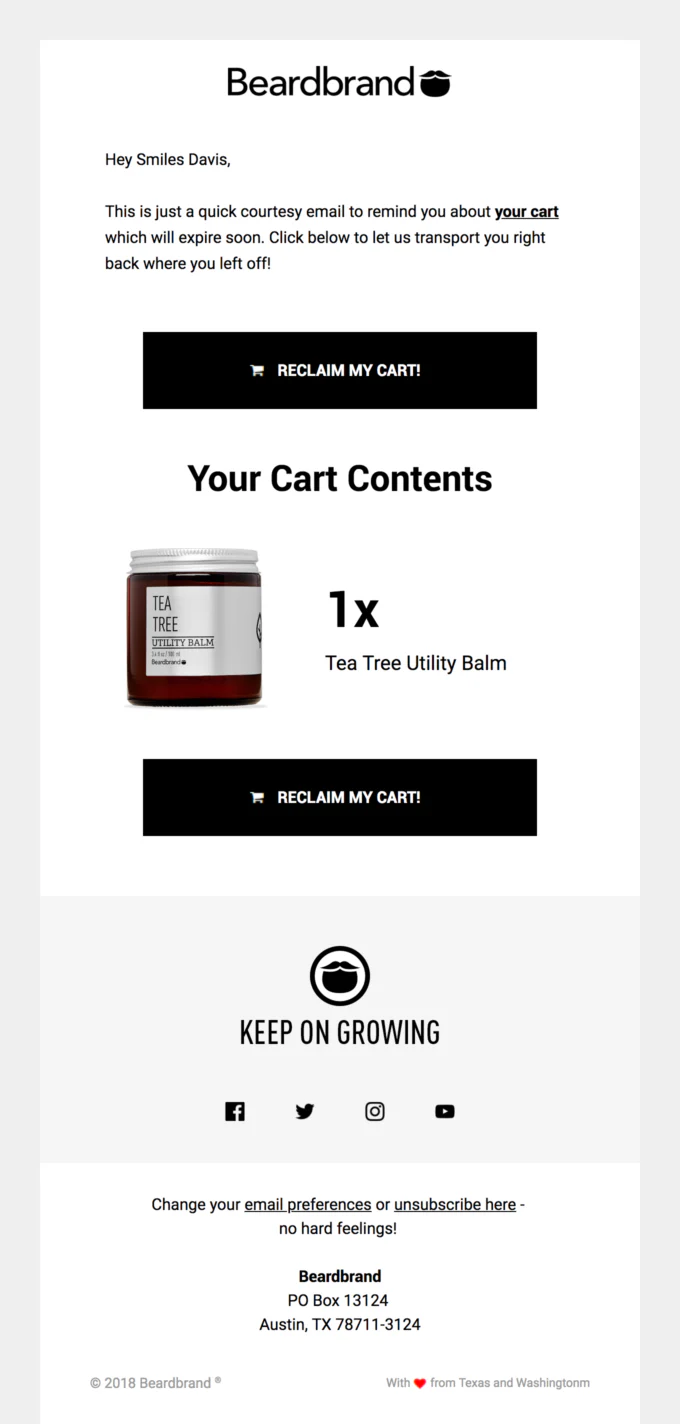
Source: Shopify.com
Post-purchase emails can also provide value by recommending complementary products, offering setup guides, or sharing tips to help customers get more from what they’ve purchased.
3. Shift to Value-Driven Email Personalisation
The most ethical personalisation doesn’t just push products, it adds value to the customer’s experience. If you, as a brand, shift from purely sales-driven personalisation to providing something useful or relevant, consumers will engage more willingly.
A good example is Grammarly’s personalised email reports. Instead of sending generic promotions, Grammarly sends subscribers weekly writing insights like their productivity stats, accuracy scores, and vocabulary trends according to their usage. These updates feel like guidance rather than a hard sell.
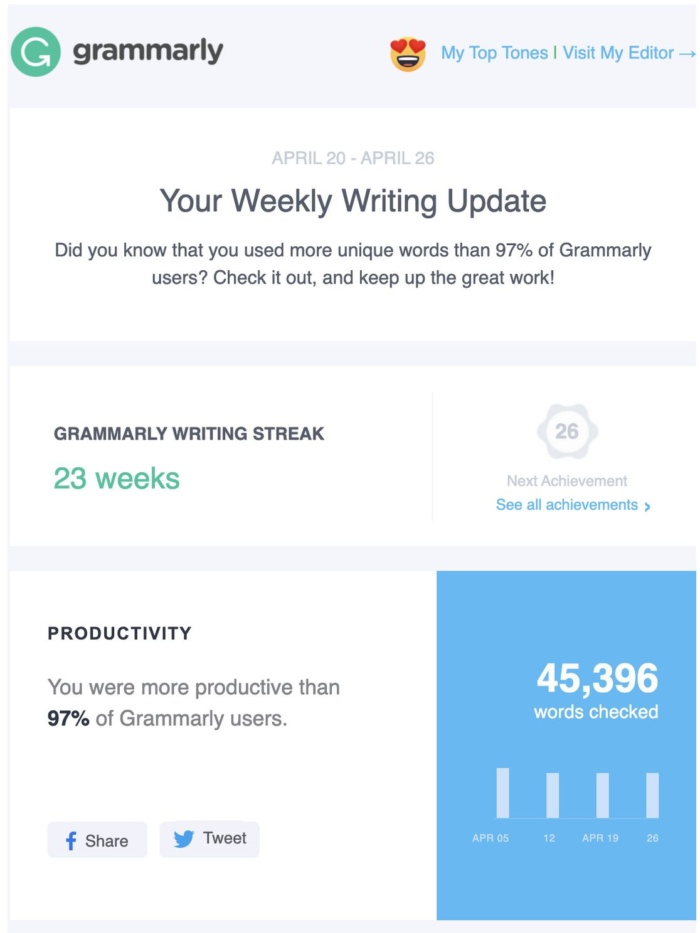
Source: neilpatel.com
Canva takes a similar approach in its newsletters by recommending templates based on a user’s past searches. This kind of personalisation feels genuinely useful. It helps subscribers discover resources they might have missed, without coming across as overly promotional.
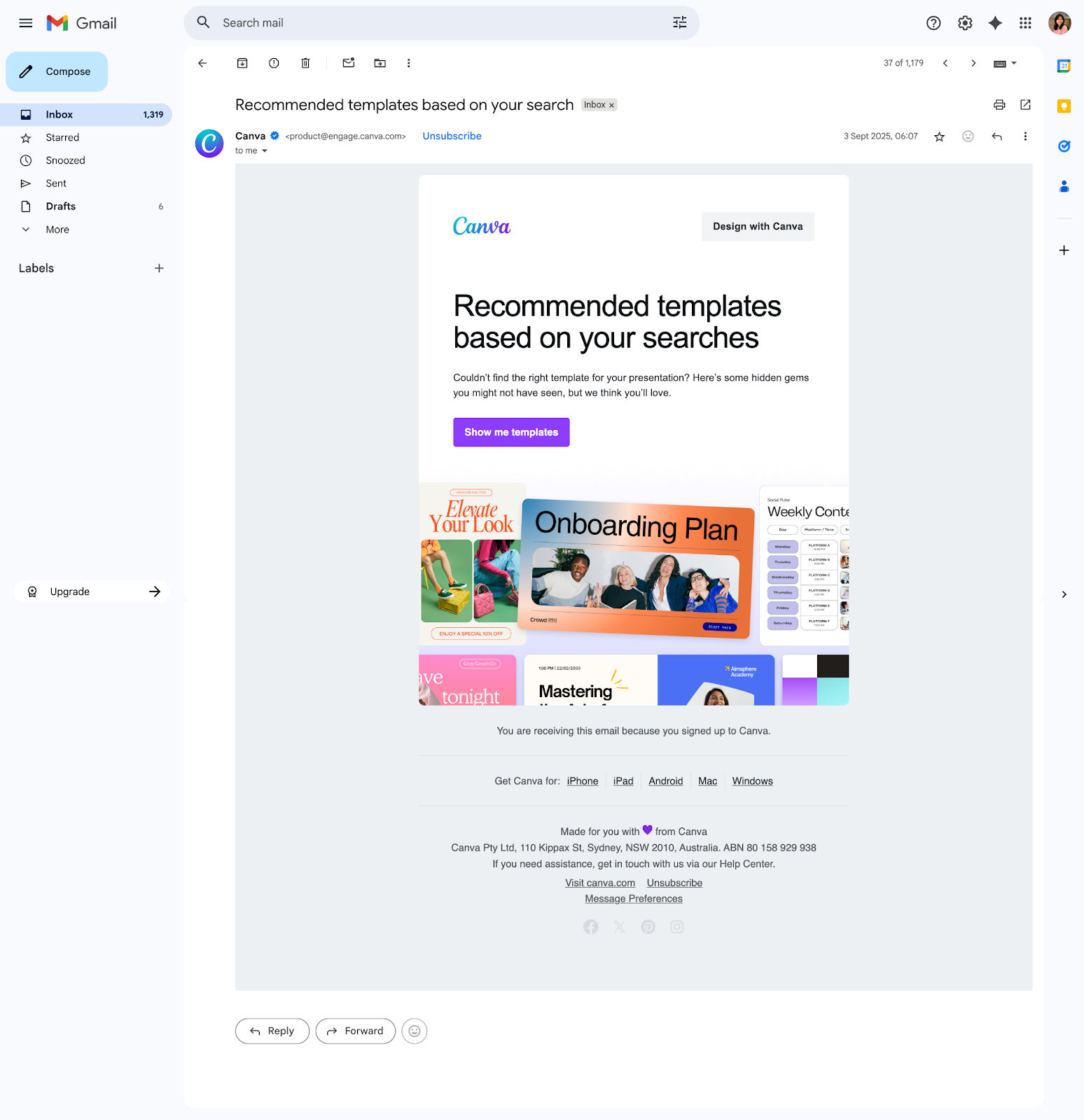
Another great example of value-driven personalisation is sharing recorded webinars based on subscribers’ interests or past engagement.
For instance, if a user previously downloaded a guide on SEO, they could receive a follow-up email with a recording of a related expert webinar. This approach helps subscribers learn at their own pace and extends the life of your previous content.
4. Use Loyalty Programs for Ethical Personalisation
Rewarding loyal subscribers is one of the most ethical and effective ways to personalise emails, and can be part of a membership or content monetisation strategy that encourages ongoing engagement. Rather than pulling data from unknown sources, this approach builds on the trust your audience has already given you.
You can put this into practice by offering:
- VIP early access sales that make subscribers feel valued and “in the know.”
- Milestone celebrations, such as “You’ve been with us for 1 year, thank you!” messages, strengthen emotional connections.
- Tailored rewards based on past engagement, like bonus points, personalised discounts, or exclusive content for your most active readers.

Source: Omnisend.com
When personalisation highlights customer appreciation rather than constant selling, subscribers are more likely to stay engaged, share positive experiences, and continue supporting your brand long-term.
5. Personalise Emails with Location (Respectfully)
Location can add relevance to emails when kept broad and value-driven, rather than invasive. For example, retailers might highlight seasonal products by region, like winter gear for colder climates, lightweight apparel for warmer ones.
It’s also useful for event-driven campaigns: instead of blasting your whole list, invite only subscribers within a reasonable distance. Or tie promotions to local timing, like iced drink offers during heatwaves or rainy-day discounts in specific cities.
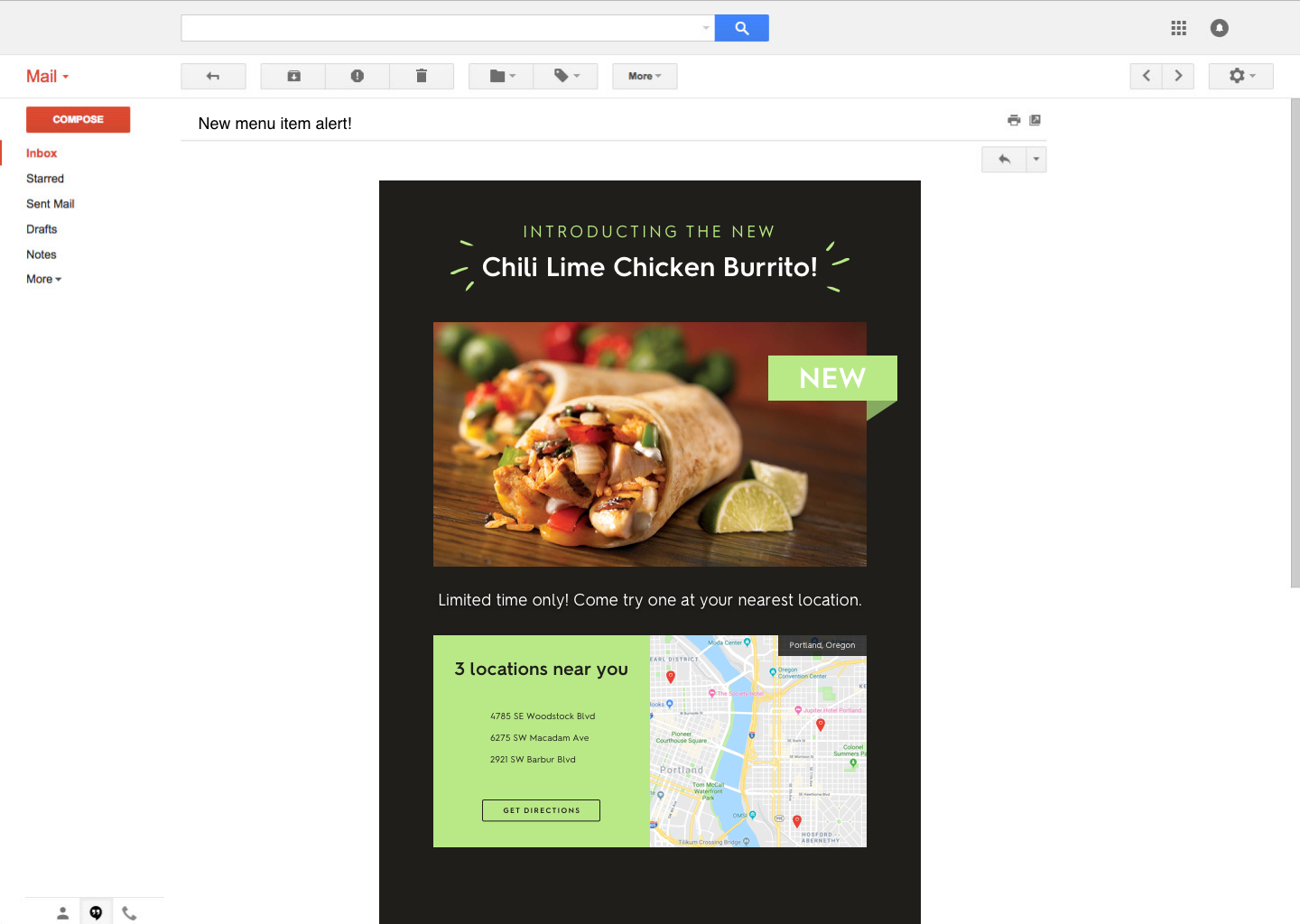
Source: Zembula.com
The key is to make emails feel timely and considerate without overstepping into real-time tracking. Broad, context-based personalisation strikes the right balance between helpful and respectful.
6. Use a Real Name to Make Emails Feel Personal
Emails sent from a recognisable individual often feel more personal and trustworthy than messages sent from a generic company address. It could be from your customer success manager, team lead, or CEO. Simply using a real name and profile photo humanises your communication and creates a sense of connection.
To make this even more effective, you can use an email signature maker so that every team member’s signature is consistent, professional, and on-brand, while still feeling personal. A well-crafted signature reinforces credibility and subtly reminds recipients they’re interacting with a real person.
Your subscribers are more likely to open, read, and act on emails when they feel like they’re hearing from a real person rather than a faceless organisation. A great example is Notion, which often send newsletters from their CEO, Ivan, even including his email address.
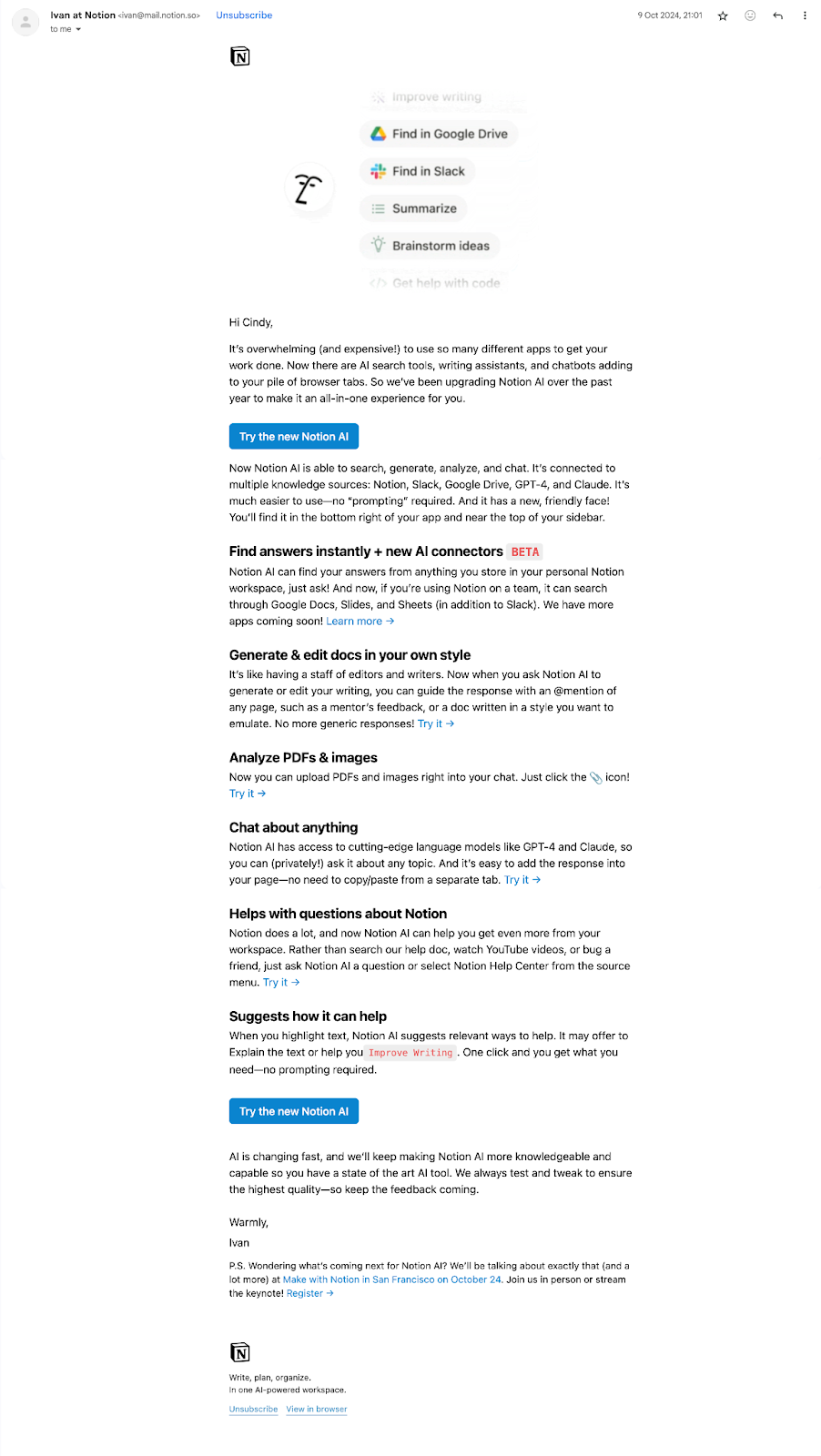
Even the way you close your emails plays a role in making communication feel personal consider using best regards alternatives to make your messages feel warmer and more genuine.
7. Make Privacy Part of the Personalisation Experience
Your subscribers may still wonder how their data is being used, even when your emails are personalised, relevant, and helpful. Simple reassurance, like adding a line in your footer explaining how you protect their information, or linking to your privacy policy can ease concerns.
Many consumers today understand that their digital footprint leaves traces like browsing activity, device type, or past purchases that can be used for personalisation. Acknowledging this openly (and showing how responsibly you handle it) builds trust and makes personalisation feel less intrusive.
Some brands take this even further. Qantas, for instance, includes a clear note in its emails on cyber awareness.
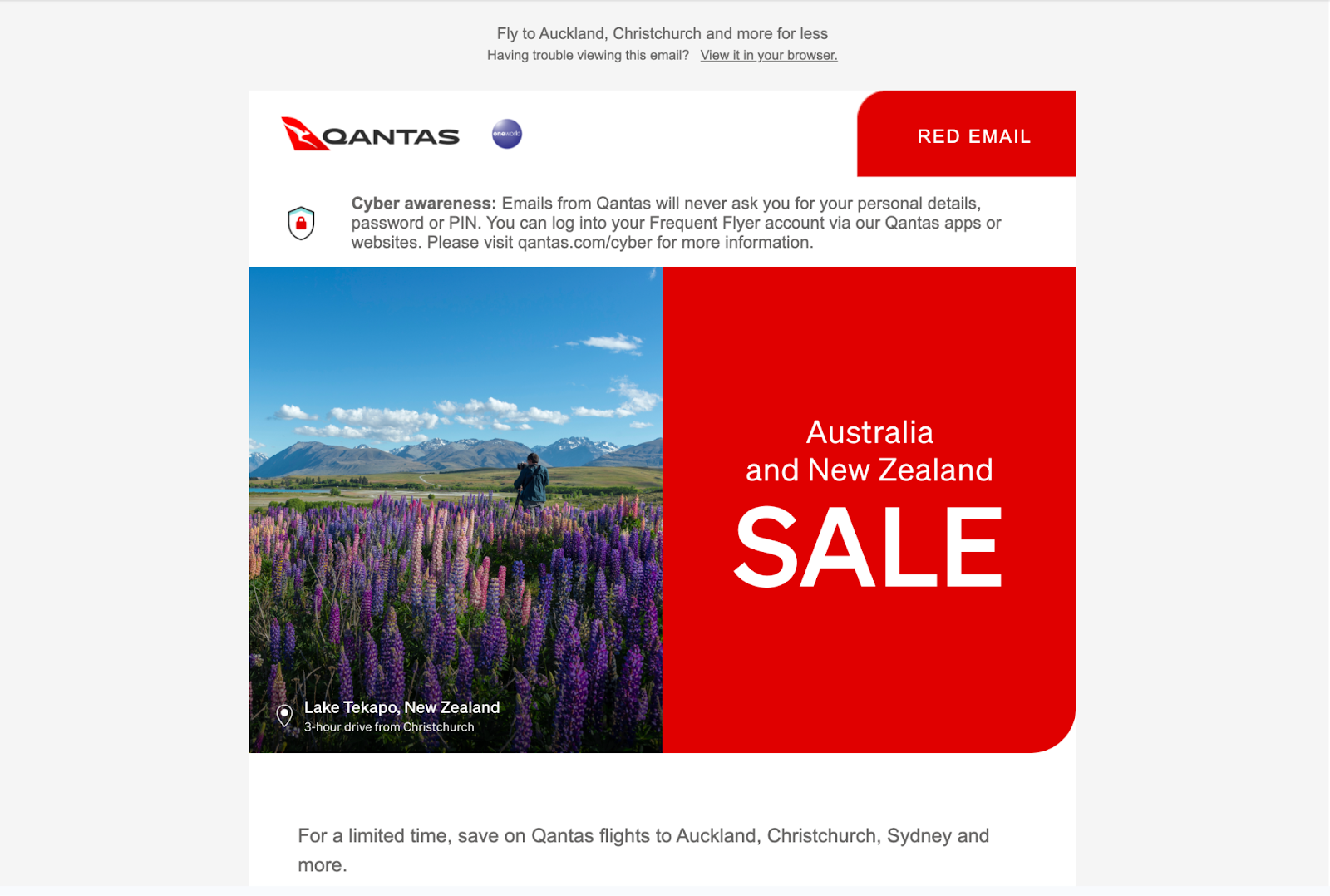
Proactive messages like this remind subscribers that their privacy and security are top of mind. And if a breach ever does occur, you can also partner with providers like Aura to offer complimentary identity theft protection or identity theft insurance to show that you’re committed to safeguarding their data even in worst-case scenarios.
The Future of Email Personalisation
The future of email personalisation isn’t about predicting every move a consumer makes it’s about creating email experiences that feel helpful, natural, and entirely within the consumer’s control.
Companies that prioritise transparency, first-party data, and value-driven email personalisation will build stronger, longer-lasting relationships with subscribers. Tools like Neo are already helping brands strike this balance by enabling smarter, privacy-conscious personalisation that helps businesses send relevant, well-timed messages without crossing the line.
Those that continue to rely on hyper-targeting, forced tracking, and overly aggressive AI predictions will struggle as consumers opt out of their systems and move toward brands that respect their privacy.
The balance between email personalisation and privacy isn’t a trade-off it’s an opportunity. Brands that get it right won’t just avoid backlash they’ll earn trust, loyalty, and long-term engagement in a digital world that values control and choice.

Get Business Email
No domain name required
Personalise Email
With Neo





.svg%201.svg)
.svg)
.svg)
.svg%201.svg)



